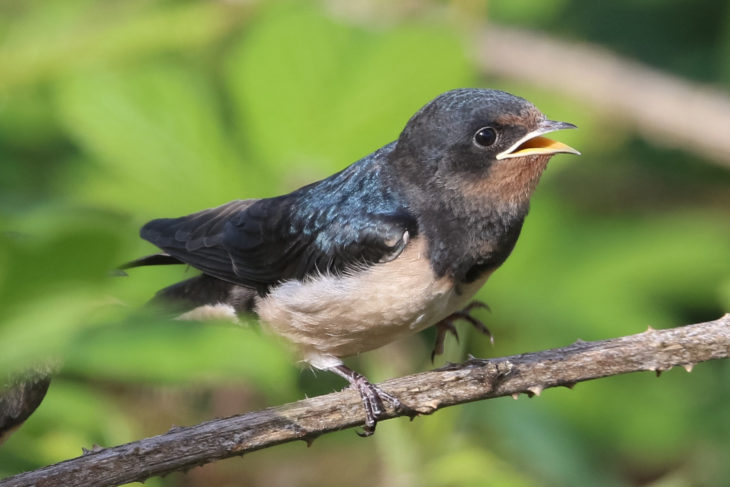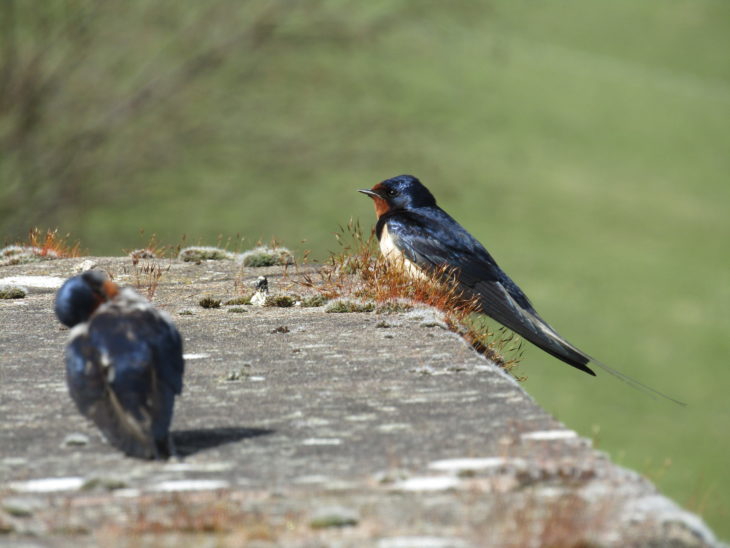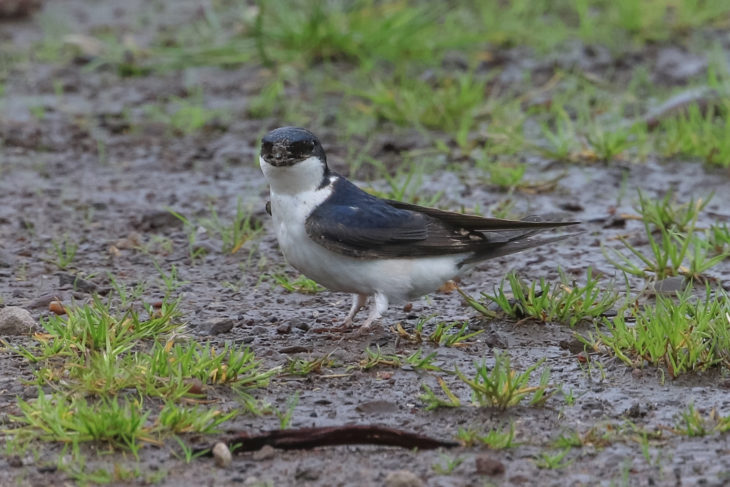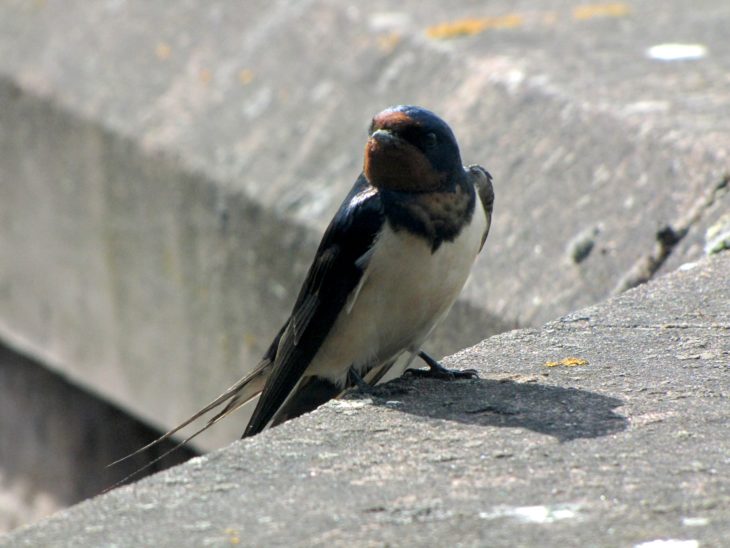Swallow season is coming to an end
Spring in Scotland marks the return for many migrant birds that come to breed over the summer months, one of them being swallows. They are part of a family of passerine birds with a very distinctive appearance. They are small and agile with dark glossy blue backs, red throats and pale underneath. They are 18cm in length and have a wingspan of 34cm and weigh about 19g, which is the same weight as 5 raspberries! They arrive around April/May time and begin building their nests which are cup-shaped and made out of mud lined with feathers and grass. They will build their nest in man-made structures like barns, sheds and under eaves. A swallow’s clutch size is 4-5 eggs, hatching after about 17-22 days and then juveniles will fledge after about 20-22 days. Around 760,000 pairs nest in the UK during breeding season. Even though the sexes are alike the males have longer and narrower tail-streamers than the females, which can be hard to see during flight as they are fast, going up to 50-65 km/h. Juveniles are easier to tell apart from the adults as they have short blunt tail-streamers, buffish-white or brownish-pink foreheads and throats with the upperparts having very little blue gloss.


Swallows are rural birds so you’re most likely to see them in the countryside or in villages and pastures rather than in towns. They dart gracefully over fields, barnyards and open water looking for flying insects and here at Montrose Basin we often see them catching insects over the salt pans and even over the basin itself at high tide. They will eat bees, hoverflies and even flying ants but especially like flies! A brood of swallows needs about 6,000 insects a day just to survive, but that’s easy for these birds as they are highly adapted to aerial feeding, catching insects on the wing. Impressive little things, aren’t they?
On migration or after breeding they can be seen and heard in large numbers, chattering away on overhead wires and roosting in reed beds. They migrate 6,000 miles all the way from southern Africa and over the perilous Sahara Desert to reach our shores, many birds unfortunately perishing during this trip.
Their song is a loud ‘tswit’ hurried twitter, very different from the house martin which people often confuse for a swallow. The best way to tell them apart is to look at their tails during flight – swallows have much longer forked tails and house martins have shorter squarer tails.


Here at the visitor centre we even had some swallows nesting under our eaves and one would often perch on our webcam and would sing its little heart out, which the visitors seemed to really enjoy, especially with them so up close. They will begin their migration back to Africa during September, with early broods of youngsters being the first to go. A few stragglers may hang around into October, so if you want to see them you had better go and see if you can spot some before you miss your chance. Don’t worry if you run out of time though – there’s always next year!
Lauren McDougall
Visitor Centre Assistant
Help protect Scotland’s wildlife
Our work to save Scotland’s wildlife is made possible thanks to the generosity of our members and supporters.
Join today from just £4 a month to help protect the species you love.
Preface
Spring in Scotland marks the return for many migrant birds that come to breed over the summer months, one of them being swallows. They are part of a family of …
